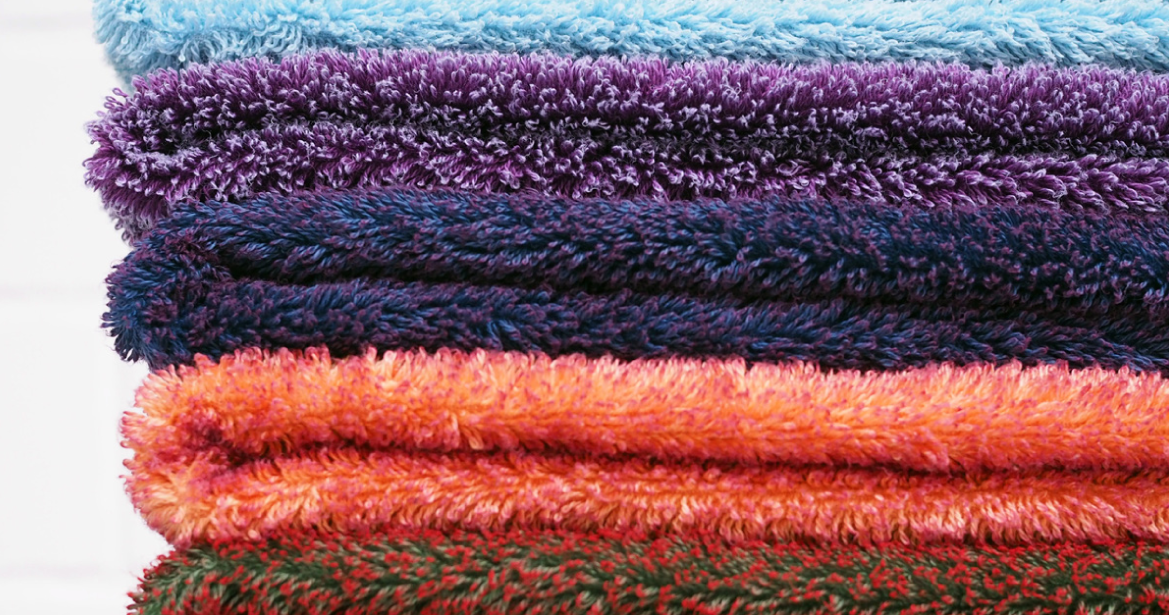PERIPRET CAP eco: Light-and-Dark Effects or Contrast Colors on Garments
PERIPRET CAP eco is a special textile auxiliary based on polyurethane (PUR). It is used for the production of formaldehyde-free two-colored effects on garments. By means of PERIPRET CAP eco you can create light-and-dark color effects and even bicolored contrast dyeings on ready-made apparel or terry articles. Two-tone effects were traditionally produced using fiber mixtures. Due to the reserving effect of PERIPRET CAP eco you can now easily create such color effects on cellulosic textiles. This way you can decide flexibly after tailoring – and not long before the production of the yard goods – which color effects you would like to obtain on the garments.
Traditional Production of Two-Colored Dyeings
Traditionally, two-colored dyeings could only be produced on textiles made of fiber blends or on fabrics, for which different yarns were used. In case of a wool-cellulose-mixture for example, firstly the woolen part was dyed with acid dyes (color 1); subsequently the cotton or viscose part was dyed in another shade (color 2). The same happened with cotton-synthetic blends, where the different fiber components could be dyed in different colors. In this case it was even possible to realize well noticeable color differences: The cotton part could be dyed in a dark color with direct dyes or reactive dyestuffs (color 1), whilst the polyester share could be dyed with disperse dyes in a light shade (color 2).
In the Past: Decision before Fabric Production
In the past, two-tone textiles made of only one fiber substrate could only be dyed by means of complex special processes. The decision ‘what will happen with the fabrics later’ had to be taken before the production of the fabrics. One option was the use of differently colored yarns for the woven cloth. Another option which offered more flexibility for coloring was the application of differently finished yarns for woven or knitted fabrics. These fabrics were later dyed as yard goods. 100 % woolen cloth could partially contain chlorinated wool, 100 % cotton fabrics could contain a share of mercerized cotton. The specially pretreated fibers subsequently dyed in a darker shade. This way light-and-dark effects could be created. Two-colored contrast dyeings could be only manufactured by means of elaborate reservation of the fibers. These chemical reservations had to be carried out on the yarns before weaving or knitting.
Fashionable Production of Two-Colored Garments, Terry Articles or Home Textiles with PERIPRET CAP eco
PERIPRET CAP eco is used as reserving agent for garment dyeing. The areas where the product was applied are hardly stained during the subsequent dyeing process. As usual, the dyestuff group used for dyeing depends on the fiber substrate. PERIPRET CAP eco can be applied on all cellulosic textile materials such as ready-made garments, terry articles or home textiles. For partial effects we suggest a spray application of the product. For areal effects the product can be applied by a dip-hydroextract process. The product based on PUR is formaldehyde-free and very soft. It has only minimum influence on the handle. Furthermore, PERIPRET CAP eco only slightly affects the hydrophily of the goods which is most important in case of terry products.
Fashionable Light-and-Dark Effects (Chiaro-Scuro-Effects) with PERIPRET CAP eco:
PERIPRET CAP eco is used to create fashionable light-and-dark (chiaro-scuro) effects. The product is applied together with a crosslinking agent like PERILINK NF/G. Then the garments are dried, cured at 140 °C and finally overdyed. The areas treated with PERIPRET CAP eco stay light (color 1), the non-reserved parts are dyed (color 2).
Two-Tone Contrast Dyeings:
With PERIPRET CAP eco you can even create two-tone contrast dyeings. Therefore, PERICOLOR P pigments are added to the liquor which contains the polymer and the crosslinker. Areas treated with PERIPRET CAP eco plus pigments are colored (color 1). After application, drying and curing the goods are dyed in an exhaust process (color 2) and finally finished, as usual.
Please Contact Us.

Our garment specialists are happy to help you with questions on the topic of garment dyeing and finishing. Please feel free to write us an e-mail or tell us your request via our online contact form.
- Gerald Schwenger
- Application technology
- +49 7121 9589-76
- gerald.schwenger@drpetry.de


